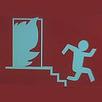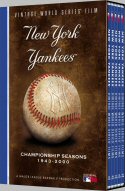|
Larry Mahnken and SG's | ||
|
| Replacement Level Yankees Weblog |

|
|
"Hey, it's free!" | ||
|
Larry Mahnken and SG's | ||
|
| Replacement Level Yankees Weblog |

|
|
"Hey, it's free!" | ||
|
Featuring: Larry Mahnken SG sjohnny TVerik Sean McNally Fabian McNally John Brattain  
The New York Yankees Vintage World Series Films DVD Set, available from A&E. Yankees Tickets World Series Tickets MLB All Star Tickets NFL Tickets Purchase your Onlineseats.com is your #1 source for MLB tickets, NY Mets Tickets, Cubs Tickets, Yankees Tickets, Red Sox Tickets, Giants Tickets, Astros Tickets, Angels Tickets, Phillies Tickets.
Buy all your MLB Tickets,
Laser Keyboard Brazil Flowers TickCo.com for premium New York Yankees Tickets Boston Red Sox Tickets Chicago white Sox Tickets A's Tickets Angels Tickets New York Mets Tickets St Louis Cardinals Tickets Cubs Tickets Dodgers Tickets Worldticketshop Football Tickets Concert Tickets Tennis Tickets Rugby Tickets Formula 1 Tickets "I'm not a pessimist, I'm an optimist. Things are really worse than I say they are." - Steve South

04/01/2003 - 04/30/2003 05/01/2003 - 05/31/2003 06/01/2003 - 06/30/2003 07/01/2003 - 07/31/2003 08/01/2003 - 08/31/2003 09/01/2003 - 09/30/2003 10/01/2003 - 10/31/2003 11/01/2003 - 11/30/2003 12/01/2003 - 12/31/2003 01/01/2004 - 01/31/2004 02/01/2004 - 02/29/2004 03/01/2004 - 03/31/2004 04/01/2004 - 04/30/2004 05/01/2004 - 05/31/2004 06/01/2004 - 06/30/2004 07/01/2004 - 07/31/2004 08/01/2004 - 08/31/2004 09/01/2004 - 09/30/2004 10/01/2004 - 10/31/2004 11/01/2004 - 11/30/2004 12/01/2004 - 12/31/2004 01/01/2005 - 01/31/2005 02/01/2005 - 02/28/2005 03/01/2005 - 03/31/2005 04/01/2005 - 04/30/2005 05/01/2005 - 05/31/2005 06/01/2005 - 06/30/2005 07/01/2005 - 07/31/2005 08/01/2005 - 08/31/2005 09/01/2005 - 09/30/2005 10/01/2005 - 10/31/2005 11/01/2005 - 11/30/2005 12/01/2005 - 12/31/2005 01/01/2006 - 01/31/2006 02/01/2006 - 02/28/2006 03/01/2006 - 03/31/2006 04/01/2006 - 04/30/2006 05/01/2006 - 05/31/2006 06/01/2006 - 06/30/2006 07/01/2006 - 07/31/2006 08/01/2006 - 08/31/2006 09/01/2006 - 09/30/2006 10/01/2006 - 10/31/2006 LINKS Yankees Sites and Columnists Nomaas.org General Baseball Sites & Columnists Rotoauthority.com The Book Blog - Playing the Percentages in Baseball(Tango, MGL, Dolphin) Yankees Blogs Almost Perfect Baby Bombers Baseball Mania Bronx Banter Dugout News Eephus Pitch Fire Joe Torre Blog Here Comes Number 27 High and Tight Lohud Yankees Blog No Sense Worrying Soft Hands The Sporting Brews The Stat Boy of the Empire Was Watching Yankees Chick Yankees Fans in Foreign Lands Yanks Blog Look what people have to say about Larry Mahnken's commentary! "Larry, can you be any more of a Yankee apologist?.... Just look past your Yankee myopia and try some objectivity." "Mr. Mahnken is enlightened."
"Wow, Larry. You've produced 25% of the comments on this thread and
said nothing meaningful. That's impressive, even for you."
"After reading all your postings and daily weblog...I believe you have truly become the Phil Pepe of this generation. Now this is not necessarily a good thing."
"you blog sucks, it reeds as it was written by the queer son of mike lupica and roids clemens. i could write a better column by letting a monkey fuk a typewriter. i dont need no 181 million dollar team to write a blog fukkk the spankeees"
"i think his followers have a different sexual preference than most men"
"Boring and predictable."
"Are you the biggest idiot ever?"
"I'm not qualified to write for online media, let alone mainstream
media."
This site is best viewed with a monitor.
|
Disclaimer: If you think this is the official website of the New York Yankees, you're an idiot. Go away. Monday, January 30, 2006
It's early projection time by SG
The last few years in late January, Dan Szymborski at Baseball Think Factory releases his ZiPS projections in the form of a Diamond Mind baseball disk. This allows nerds like me to play some simulated seasons with Diamond Mind Baseball, probably the best baseball simulator out there.
Thursday, January 26, 2006
NY Daily News: Yanks mulling Mike by SG
Tuesday, January 24, 2006
One Year by Larry Mahnken
It's interesting that the days you least want to remember are often the days you remember the most vividly. Today is the anniversary of the single worst day of my life, and I just can't get over it.
Monday, January 23, 2006
Yankees.com - Cabrera gets taste of big time by SG
There's a little story about Melky Cabrera and some other Yankees winter league exploits on Yankees.com.
Thursday, January 19, 2006
2 Yankees seek arbitration by SG
From the Asbury Park Press:
Monday, January 16, 2006
FIP, xFIP and the 2005 Yankees by SG
A few weeks ago, I used JC Bradbury's PrOPS to look a little deeper into the performance of the Yankees hitters. I thought I should look at some more of the Hardball Times' stats, this time for the Yankee pitchers. Some of the stats below are self explanatory, but here's a synopsis of the ones you may not be familiar with, from the Hardball Times' stats glossary:
Friday, January 13, 2006
Memorable Yankee Games I've Attended by SG
joel had a good suggestion in the comments about revisiting our most memorable games attended. I picked out five of my personal favorites and listed some details below, and I invite everyone to do the same in the comments for any games that stick out in their minds.
Thursday, January 12, 2006
Don Mattingly - The Keltner List by SG
With some of the discussion about Don Mattingly not getting any respect in the Hall of Fame vote, I thought I'd use one of Bill James's tools, the Keltner list, to examine Mattingly's Hall of Fame credentials. The Keltner list was designed to examine the credentials of borderline candidates through a series of 15 subjective questions. What follows below are the questions and then my attempts at the answers.
Wednesday, January 11, 2006
Wait Till Next Year Top 75 by Fabian
Phil Hughes comes in at 46 with the typical evaluation (good stuff, terrific results, injuries a concern), so that does it for the Yankees on this Top 75 list.
NY Post: GOOSE LETS LOOSE by SG
From Kevin Kernan in the Post:
Monday, January 09, 2006
Wait Till Next Year Top 75 by Fabian
Bryan Smith has begun his annual Top 75 Prospects list. In the linked post he's handing out honorable mentions. Our very own Christian Garcia gets a nod. Smith acknowledges that the nod was given Garcia over the likes of J.B. Cox, C.J. Henry, Tyler Clippard, and Jose Tabata. I'm not sure I like Garcia as much, but after 1-2 in the Yankee system it's hard to come up with a stringent ordering. Garcia making the list at this point also means that Duncan should factor somewhere around the back end of the 75 and Hughes could either be really high, if not much weight is given to his injury concerns, or around the middle.
Baseball America: Yankees Top 10 Prospects by Fabian
What did Baseball America nail? What'd they miss? Discuss in the comments.
Friday, January 06, 2006
NY Post: LEITER MAY BE BACK by SG
From the always inspired New York Post:
Wednesday, January 04, 2006
Chass: Yankees show an ugly face by SG
Linked above is a hatchet job by Murray Chass, basically ripping the Yankees for not allowing their players to play for Bud Selig's "World Baseball Classic."
| |||||||||